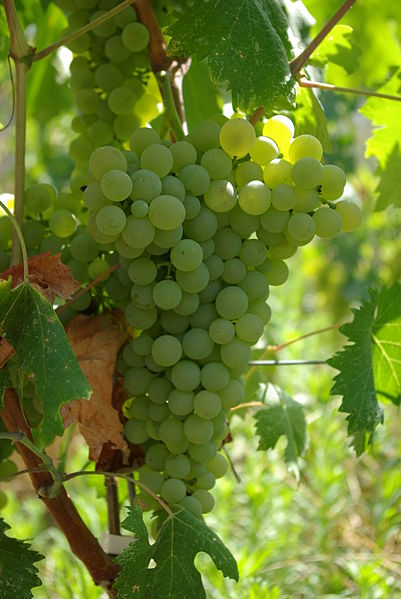This is the first in our series, discussing some very interesting white wines from indigenous Italian grapes. We are always on the look-out for serious producers who focus on quality, willing to spend time in the vineyard to control flavor, and willing to use more labor intensive fermentation techniques to make a final product which brings out the best in their production. The best of these wines will sing along side of food, especially those foods from the same regions. Our first posting is about one of our favorites – vermentino.
Vermentino is a late-ripening white grape variety, and is the primary grape for white wine in Sardinia, and to some extent in Corsica, in Piedmont under the name Favorita, and in increasing amounts in the Tuscany region. Vermentino also shows up in wines from other regions, such as Colle Solato from Umbria (we’ll review this wine in one of our next postings).
The Vermentino wine which often gets the most attention is the DOCG Vermentino di Gallura which is produced in the province of Olbia-Tempio, in the north of Sardinia. It’s a good wine with mildly-flavored seafood, but it is difficult to drink alone or with other stronger flavors. A classic Vermentino from Sardinia is straw colored (sometimes slightly green), light bodied, has zingy acidity, and a hint of minerality. It reminds me of Sancerre, which is not our favorite expression of sauvignon blanc. Our favorite is Canayli, which is a perfect Sardinian expression of the grape, providing an alluring mixed sweet/savory aroma. The palate is rich, slightly sweet, with pineapples, sweet pear flavors. It has a nice finish, with some aromatic spice and green pepper.
On the other hand, we are finding the Vermentino wines from Tuscany, Piedmont, and Umbria are even more exciting. Our favorites are Antonio Sanguineti (Tuscany), Costamolino (Sardinia), Colle Solato (a Grechetto/Vermentino combination from Umbria), Poggioargentiera (Maremma region of Tuscany), and Poggio al Tesoro Solosole (Bolgheri region of Tuscany). The flavors tend to be a bit bolder, the wine has a bit more body, and the acidity is balanced to make these wines very food friendly – but the wine is also delightful on its own.
It might be tough to find these at your local wine store, but you certainly can source these on the web. We would also suggest that you look for wines from the same region – you most likely will get similar characteristics to those we will highlight in our next posting.
Food Pairings
Since most of the Vermentino wines have pretty high in acidity, they match very well with shellfish and seafood, but also pork or chicken that are sauced with a wine/citrus combination. We like to pair the fuller-bodied versions from Tuscany with goat cheese and fruit, with cheeses from Tuscany (especially the Pienza fresca), with salads that have a stone-fruit component (especially the poached plum recipe you’ll see on our website), or with a non-tomato flatbread or pizza.



